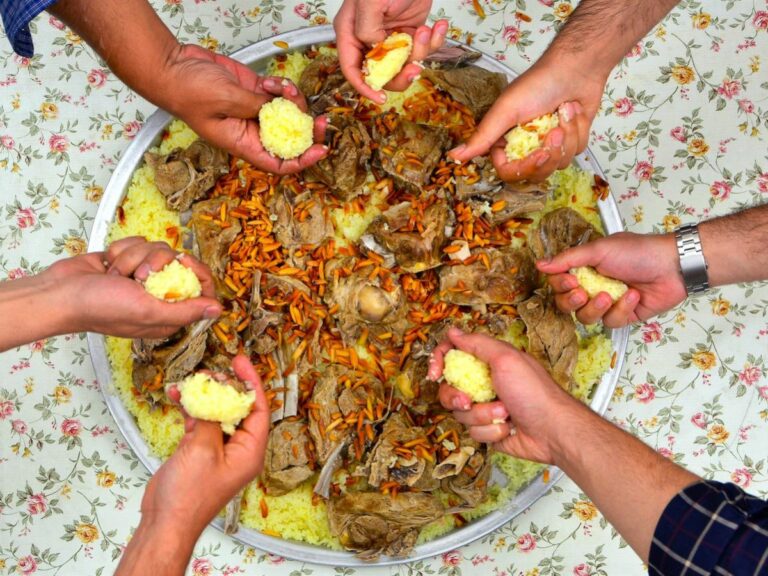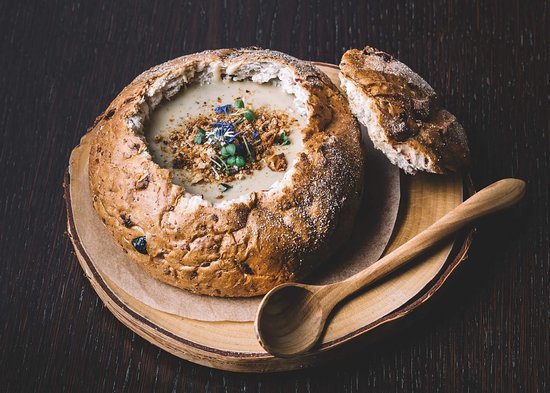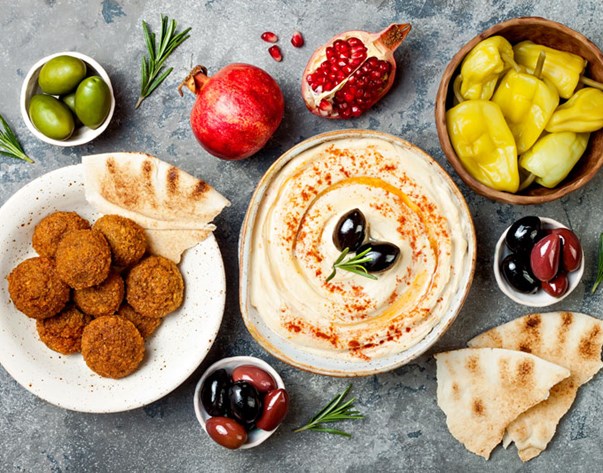Introduction: Jordanian Cuisine
Jordanian cuisine is a culinary delight that has evolved over thousands of years with influences from different cultures and civilizations. The food in Jordan is a reflection of the country’s diverse history and geography, with traditional recipes that have been passed down through generations. From its Mediterranean coastline to its arid deserts, Jordanian cuisine offers a wide range of flavorful dishes that are unique and delicious.
Historical Sites and Archaeological Discoveries
Jordan is a country with a rich history, and its archaeological sites and discoveries provide a glimpse into the past. These discoveries have influenced the country’s cuisine in several ways, with recipes that have been adapted and developed over time. Some of the most significant archaeological sites in Jordan include Petra, Jerash, and Umm Qais.
Influence of Nabateans on Jordanian Cuisine
The Nabateans were an ancient people who inhabited the region that is now Jordan. They were known for their trading skills and developed a network of trade routes that linked the Arabian Peninsula, India, and the Mediterranean. The Nabateans influenced Jordanian cuisine by introducing spices and herbs that are still used today, such as sumac, za’atar, and cumin. They also introduced the use of clay ovens for baking bread, which is a staple of Jordanian cuisine.
Influence of Romans on Jordanian Cuisine
The Romans occupied Jordan for several centuries and left a lasting impact on the country’s cuisine. They introduced new ingredients such as chickpeas, lentils, and eggplants, which are now essential components of Jordanian cuisine. They also brought with them the technique of using vinegar and olive oil as a dressing for salads, which is still widely used in Jordanian cuisine. The Roman influence can also be seen in the way that meat is prepared, with lamb and beef being popular choices for grilling and roasting.
Influence of Abbasid on Jordanian Cuisine
The Abbasids were a dynasty that ruled over Jordan during the eighth and ninth centuries. They introduced new cooking techniques, such as using spices and herbs to enhance the flavor of dishes. They also introduced the use of sugar and honey to sweeten foods, which is still used in Jordanian cuisine today. The Abbasids also introduced new methods of preserving foods, such as pickling, which is still a common practice in Jordan.
Conclusion: Rich Heritage Reflected in Cuisine
Jordanian cuisine is a reflection of the country’s rich heritage and diverse culture. From the Nabateans to the Romans and the Abbasids, each civilization has left its mark on Jordanian cuisine. The use of spices, herbs, and traditional cooking techniques have been passed down through generations, resulting in a unique and flavorful cuisine that is unlike any other. Jordanian cuisine is a testament to the country’s rich history and is a must-try for anyone visiting the region.










